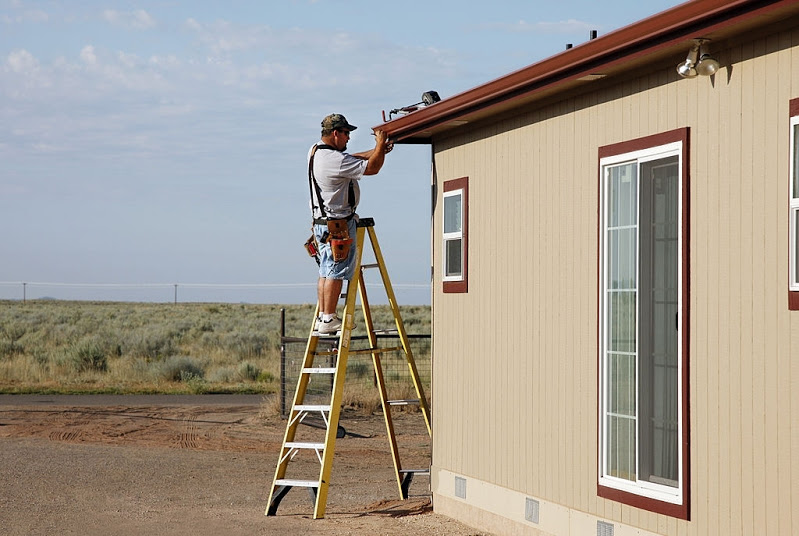Your home's guttering system plays a vital role in protecting your property from water damage. If your gutters are damaged or improperly installed, they can cause significant issues for your home's structure and foundation. This guide will provide you with everything you need to know about guttering and DIY gutter installation. We will cover the different types of gutter materials, installation tips, and how to maintain your gutter system properly. With this knowledge, you'll be well-equipped to tackle any guttering project with confidence.
Understanding Guttering and its Importance
Guttering is the system of channels and downspouts that collect rainwater from your roof and direct it away from your home's foundation. A well-functioning gutter system is essential for:
- Preventing water damage to your home's exterior, siding, and foundation
- Reducing the risk of basement flooding
- Preventing soil erosion around your home
- Protecting your landscaping and plants from excessive water exposure
Failing to maintain your gutters can lead to costly repairs down the line. It's crucial to inspect your gutter system regularly and address any issues promptly.
Gutter Materials: Pros and Cons
When it comes to DIY gutter installation, one of the first decisions you'll need to make is choosing the right material. Here are some of the most common gutter materials, along with their pros and cons:
- Aluminum: Lightweight, rust-resistant, and relatively easy to install. However, aluminum gutters can be prone to denting and may not be as durable as other materials.
- Vinyl: Inexpensive and easy to install for DIYers, vinyl gutters are also resistant to rust and rot. However, they can become brittle and crack in colder climates, and may not support heavy rainfall as well as other materials.
- Steel: Durable and long-lasting, steel gutters can handle heavy rainfall and snow loads. However, they can be more challenging to install due to their weight and may be prone to rust if not properly maintained.
- Copper: Highly durable and long-lasting, copper gutters develop a beautiful patina over time. However, they are more expensive than other materials and require professional installation.
DIY Gutter Installation: A Step-by-Step Guide
If you're considering DIY gutter installation, follow these steps to ensure a successful project:
- Measure And Plan: Determine the length of your gutters and downspouts, as well as the number of brackets and other accessories you'll need.
- Choose Your Materials: Based on your budget and climate, select the appropriate gutter material and accessories.
- 3. Install Gutter Brackets: Attach brackets to your fascia board at the appropriate intervals, ensuring they are level and properly spaced.
- Cut And Install Gutters: Measure and cut your gutters to fit, then secure them in place using the brackets.
- Install Downspouts: Attach downspouts to the gutter system, ensuring they are properly connected and direct water away from your home's foundation.
- Seal And Test: Use gutter sealant to seal any seams and joints, then test your new gutter system with water to ensure proper flow and drainage.
Seamless Gutters: Are They Worth It?
Seamless gutters are a popular option because they eliminate the seams and joints found in traditional gutter systems, reducing the potential for leaks. While seamless gutters tend to be more expensive upfront, they can save you money in the long run by requiring less maintenance and repair. Keep in mind, however, that seamless gutters typically require professional installation due to the specialized equipment needed to create and fit them to your home.
Gutter Guards: Protection Against Debris
Gutter guards are a popular accessory designed to prevent leaves, twigs, and other debris from clogging your gutters. There are several types of gutter guards available, including mesh screens, foam inserts, and surface tension systems. While gutter guards can be a valuable addition to your gutter system, it's essential to choose the right type for your specific needs and to maintain them properly to ensure optimal performance.
Gutter Maintenance and Repair
Proper gutter maintenance is crucial to keeping your gutter system functioning correctly and protecting your home from water damage. Regularly inspect your gutters for signs of damage, such as sagging, rust, or cracks. Clean your gutters at least twice a year, removing any debris and checking for clogs in your downspouts. If you notice any issues, address them promptly to prevent more significant problems down the line.
Gutter Replacement: When is it Time?
If your gutter system is beyond repair or if you're dealing with persistent issues despite regular maintenance, it may be time for a full gutter replacement. Signs that it's time to replace your gutters include:
- Frequent leaks or overflowing water
- Multiple damaged or rusted sections
- Sagging gutters or separated seams
- Damage to your home's siding or foundation due to poor gutter performance
Replacing your gutters can be a significant investment, but it's essential to protect your home from costly water damage.
Conclusion
Guttering is a critical aspect of your home's overall health and well-being. By understanding the importance of proper gutter installation and maintenance, you can protect your property from water damage and save yourself time and money in the long run. With the right materials, tools, and knowledge, DIY gutter installation is a manageable project that can improve your home's functionality and curb appeal.

.jpg)
Comments
Post a Comment